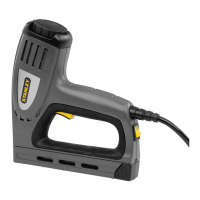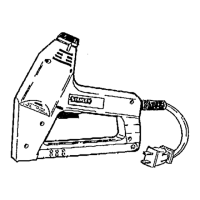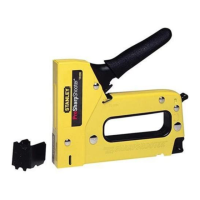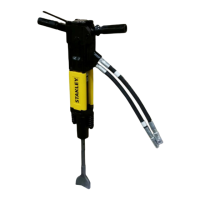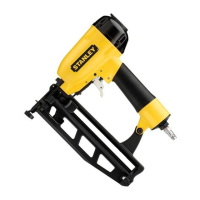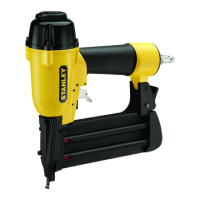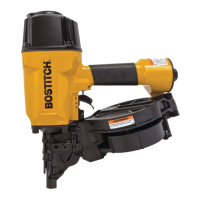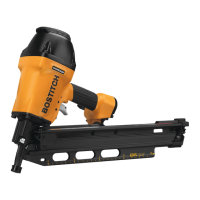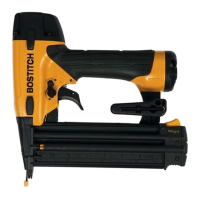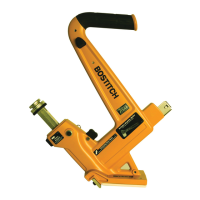TO LOAD BRADS
1. Unplug tool, (fig. 1)…(place on/off switch in "off" position, (fig. 2).)
2. Use only brads identified by stock numbers on next page. Substitute brads will
cause jamming.
3. Look for the image of a brad nail on the front side of the tool (fig. 5). Load brads into
this side only.
4. Hold tool upside down (Squeeze latch and pull, (fig. 3).)
5. Drop brads into the channel, tilt the tool so the brads lay against the channel wall,
(fig. 5).
Push the latch back in watching that the brad strip does not fall over.
6. Use High/Low power when driving brads.
TO STAPLE OR NAIL
1. Make sure the on/off switch is in the "off" position, plug stapling tacker in.
2. Turn tool on by switching to position 1 which is the "on" position and hold firmly
against work surface to engage safety mechanism.
3. Apply adequate pressure on the top of the knob (fig. 6.) while the trigger is pulled.
Understand all instructions. Failure to follow all instructions listed below may
result in electric shock, fire and/or serious personal injury.
SAVE THESE INSTRUCTIONS
Work Area
1. Keep your work area clean and well lit. Cluttered benches and dark areas invite
accidents.
2. Do not operate power tools in explosive atmospheres, such as in the presence of
flammable liquids, gases or dust.
Power tools create sparks which may ignite the dust or fumes.
3. Keep bystanders, children, and visitors away while operating a power tool.
Distractions can cause you to lose control.
Electrical Safety
1. Double insulated tools are equipped with a polarized plug (one blade is wider than
the other). This plug will fit in a polarized outlet only one way. If the plug does not fit fully
in the outlet, reverse the plug. If it still does not fit, contact a qualified electrician to
install a polarized outlet. Do not change the plug in any way. Double insulation
eliminates the need for the three wire grounded power cord and grounded power supply
system.
2. Avoid body contact with grounded surfaces such as pipes, radiators, ranges and
refrigerators. There is an increased risk of electric shock if your body is grounded.
3. Don't expose power tools to rain or wet conditions. Water entering a power tool will
increase the risk of electric shock.
4. Do not abuse the cord. Never use the cord to carry the tools or pull the plug from an
outlet. Keep cord away from heat, oil, sharp edges or moving parts. Replace damaged
cords immediately. Damaged cords increase the risk of electric shock.
5. When operating a power tool outside, use an outdoor extension marked "W-A" or
"W." These cords are rated for outdoor use and reduce the risk of electric shock.
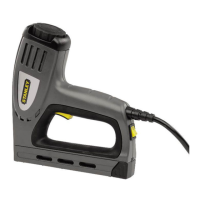
